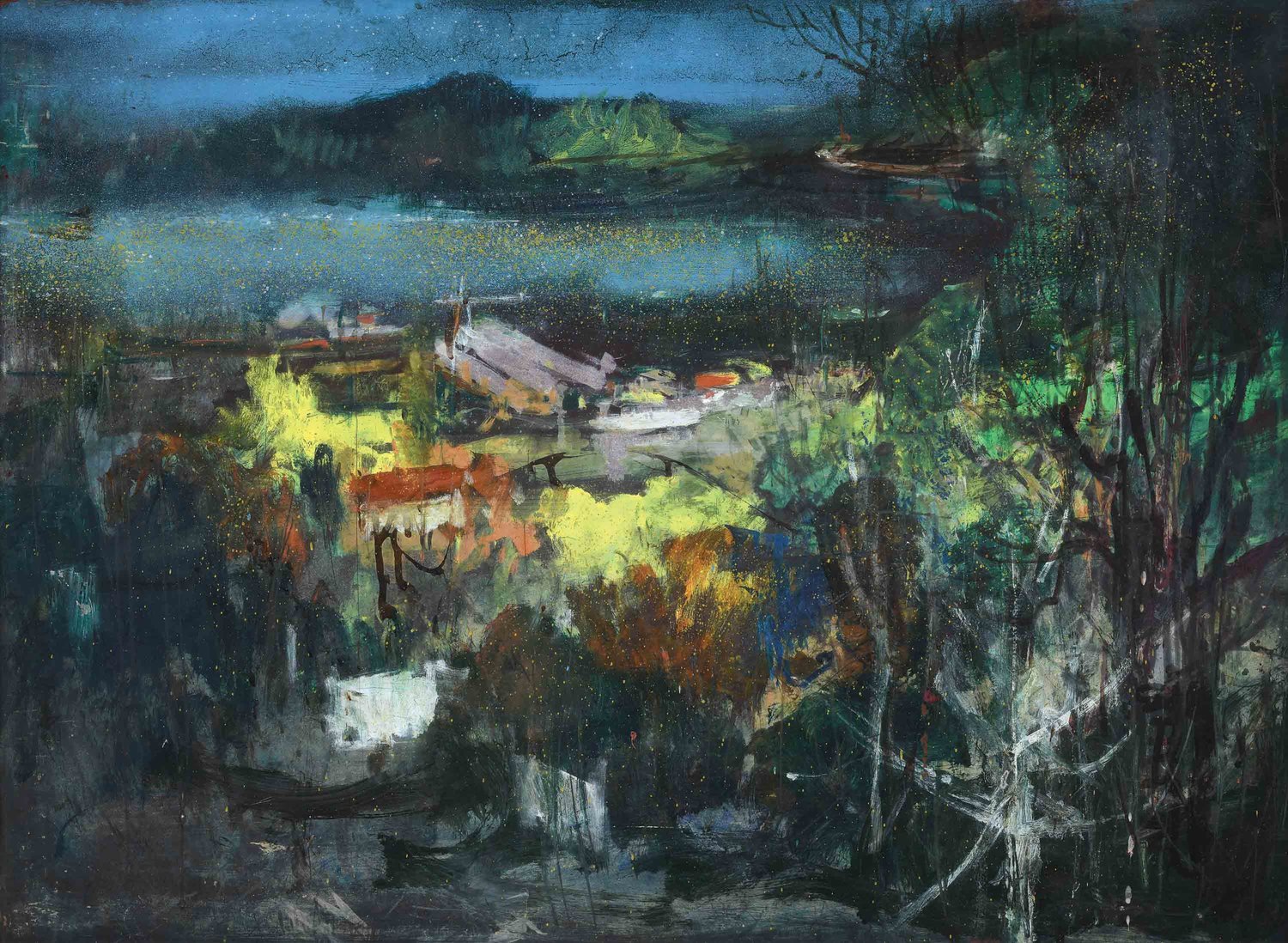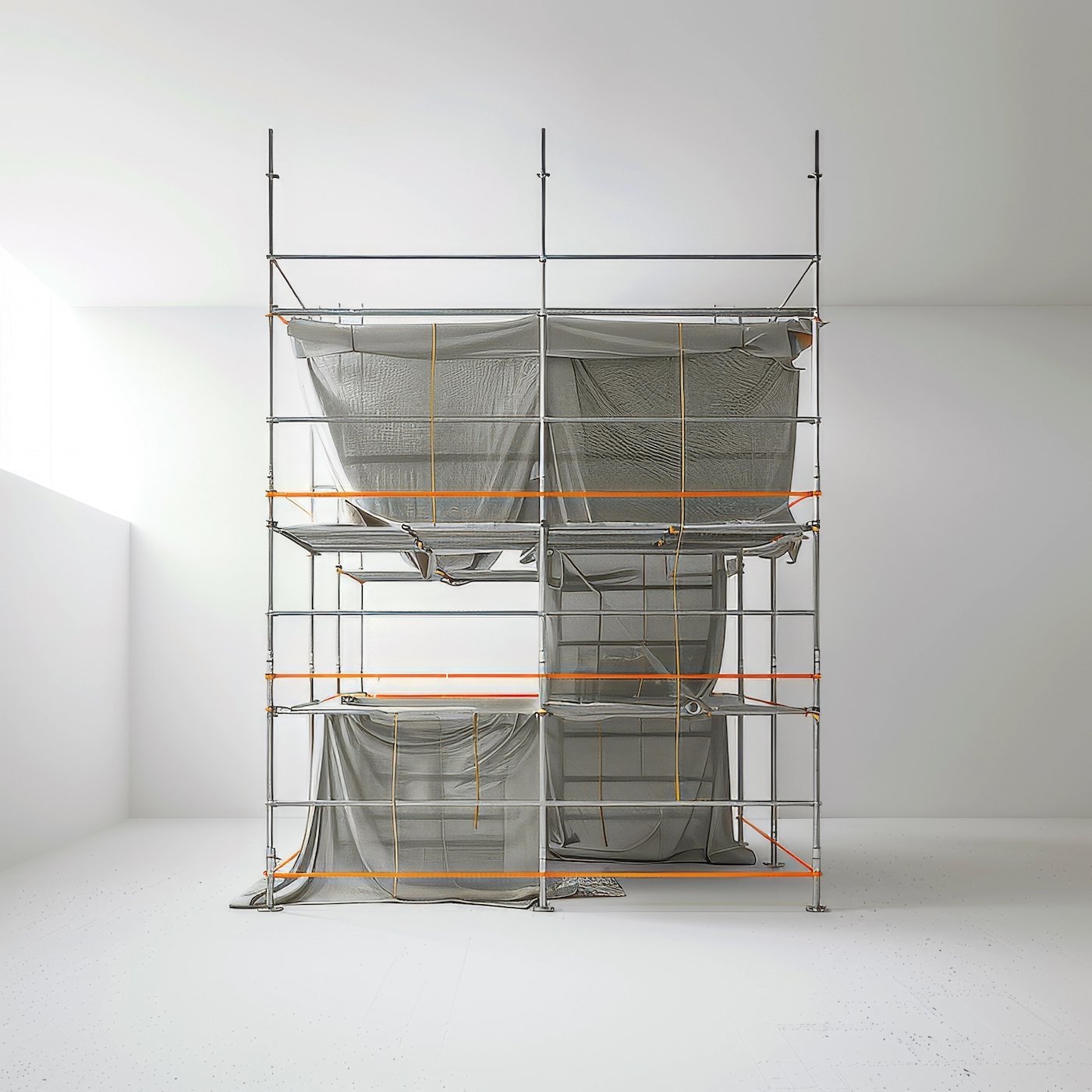'Vincent Hoisington: Painter, Decorator' at The Modern Space
Forgotten Singapore pioneer artist
By Ian Tee
Vincent Hoisington, 'The Expulsion from Eden', 1964, oil on board, 130 x 240cm. Image courtesy of Art Agenda, S.E.A.
Art Agenda S.E.A. presents 'Vincent Hoisington: Painter, Decorator', a survey exhibition of the Singaporean modern artist's works. Born in 1924, Hoisington was self-taught and became a prominent figure in the Singapore art community during the country's postwar nation-building years. Perhaps not as well-known as his peers, he was nevertheless recognised for being a pioneer in aluminium art. In addition to his works on metal, Hoisington was also a prolific painter who took inspiration from the Renaissance artists as well as 20th century masters such as Edgar Degas and Paul Cézanne.
'Painter, Decorator' brings together 10 works from various private collections, half of which are on loan. They represent every major phase of Hoisington’s oeuvre: early flower still life paintings, landscapes, figurative scenes, as well as an aluminium work produced just before his untimely death in 1972. He was an independent spirit who had a propensity towards traditional western genres at a time when the Nanyang school and watercolour artists were dominant. As such, these works offer a different perspective to the story of modern Singapore art that deviates from local themes and the emergent wave of non-objective abstraction in the 1970s.
Vincent Hoisington, 'Untitled', 1962, charcoal on paper, 73 x 47.5cm. Private collection, Singapore. Image courtesy of Art Agenda, S.E.A.
A highlight from the exhibition is 'The Expulsion from Eden', an Impressionist-styled depiction of the biblical narrative broken down into patches of green and earth tones. The blurring of figure and ground creates a sense of loss and confusion as the image threatens to dissolve into abstraction. Executed in 1964, the work marked an important point in the artist's career, just before he won first prize in the Standard Chartered Bank mural design competition. The resultant commission was a giant 40 feet by 30 feet site-specific work, his most ambitious project then.
Another historically significant work on view is an untitled figure drawing, on loan from a private collection in Singapore. Characteristic of Hoisington's style, the figure is captured swiftly with dynamic marks and has a mysterious air about her. This work was reproduced in the Singapore Art Society's 1969 'Second Sculpture Exhibition' catalogue, one of two group shows Hoisington participated in. It was also previously included in National Gallery Singapore's inaugural exhibition 'Siapa Nama Kamu? Art in Singapore Since the 19th Century' (2015).
Vincent Hoisington, 'St. George/ Keppel Harbour', undated, mixed media on board, 78 x 106cm. Collection of the artist's family. Image courtesy of Art Agenda, S.E.A.
Interestingly, Hoisington never identified as an artist but called himself a "painter and decorator". To him, "decorative" is not seen as a pejorative, and he made no distinction between commercial productions and artistic works. In fact, a very different facet of 1960s Singapore art is revealed by viewing his works through the conditions of their production. "He's described as Singapore's first commission artist," says Karen Hoisington, the artist's daughter. "You can track the city's development through the paintings he made for expatriate patrons and commissions for new buildings. When shipbuilders came in with different metals and new industrial paints, my father was fascinated by these materials and started using them for sculpture."
Vincent Hoisington, 'Passacaglia', 1972, enamel paint, repoussé aluminium over wood panel, 151 x 55.5cm. Private collection, Singapore. Image courtesy of Art Agenda, S.E.A.
Hoisington's explorations in three-dimensional form signaled a mature phase in his practice, which responded to the rapid urbanisation sweeping across Singapore. Industry and nature are synthesised harmoniously in aluminium relief works that feature abstract motifs from flora and fauna. Coated in layers of gloss enamel and polyurethane, these wall panels have an amber-like lustre and mimic the explosions of vibrant colours found on scarab beetles. A novelty at that time, these works are being rediscovered today by the market. In March 2019, 'Passacaglia' (1972) sold for HK$ 125,625 (SGD 21,773) including premium at Bonhams' 'Ritual + Culture' auction of Fine Southeast Asian Arts in Hong Kong.
'Painter, Decorator' is organised against the backdrop of growing interest in expanding the knowledge of Singapore's art history. “Vincent Hoisington has been described as an artist who fell through the cracks,” says Wang Zineng, founder of Art Agenda, S.E.A.. “Our exhibition programme in the coming year in Singapore has an eye out for enriching art history and does that by recovering the experiences and works of artists such as Hoisington.”
'Vincent Hoisington: Painter, Decorator' is on view from 19 July to 23 August 2019, at The Modern Space.
For more on Vincent Hoisington's life and his unique contributions to the cultural landscape of 1960s Singapore, read our profile on the artist here.

















